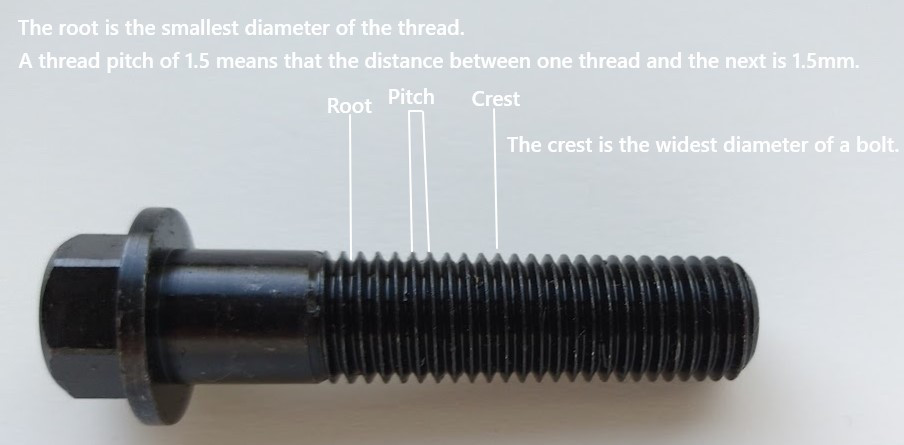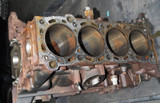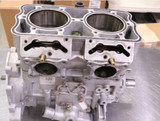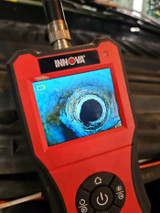Are Coarse or Fine Threads Stronger?
WiseAutoTools.com © Summary: The short answer is that "fine" threads are stronger than coarse threads. Without getting too technical we will explain the advantages of using fine threads compared to coarse threads, especially for automotive applications. Coarse threads do have their place for certain applications, we cover that too.
Coarse Threads - Fewer threads which are further apart. Wider distance between crests as pictured above.
Fine Threads - More threads than coarse and are closer together. The crests are closer together resulting in more threads. This results in more contact area.
While it's true that coarse threads are less likely to be cross threaded, fine threads are more ideal for applications when precision is needed. One example is for assembling engine components because tolerances are more precise with closer threads. A good application for coarse threads would be for when tolerances aren't as important, like bolting together large components like in building ships, bridges, bill board framework and many other large component assembly. Coarse threads are less likely to be crossed, since the threads are spread further apart from each other, they are more difficult to skip. Fine threads are more easily tapped with precision. When torqued the same, fine threads are less likely to loosen over time compared to coarse threads. This is true, especially when the element of vibration is present, like a car or truck engine would produce. Also with the heating and cooling cycles that engines have, there will be expansion and contraction. With fine threads, fasteners are less likely to loosen under those conditions. There are less extreme cycles like this when we are talking about large components in our ships, bridges or bill board framework examples.
Engineers have reasons for using certain thread pitches for specific applications. As a rule of thumb it's usually best to stick with the original thread pitch to help avoid any un-intended consequences.
Ways to determine thread size for automotive applications.
1. If there is an application look-up typically used by parts stores, this is an easy way to find the thread size. There isn't always a source for looking up some sizes this way though.
2. Measuring with a micrometer can be done but is sometimes a little difficult depending on how big/small the fastener is.
3. A thread gauge like found in tap and dye sets is a great way to determine the thread pitch. A Die may be used to check the size of a fastener as well. The problem can be, if the size you are checking is not in the tap and die set.
4. Another way to determine the size of a bolt is to take it to a parts store that has a large nut and bolt selection and simply match it up. Be cautious when using this method, because sometimes nuts can be returned to the wrong bin!
We've been selling specialty tools and thread repair kits since 2005. Call for assistance in finding the best spark plug thread repair, head bolt thread repair, drain plug or other general thread repair kit for your application at 800-734-8665 x251 or provide your details by using our Contact Form.
Recent Posts
-
Shorter Kits for Head Bolt Thread Repair - What are the downsides?
We recently came across an article that stated the more expensive, longer Time Sert kits made for he …28th Feb 2024 -
Polaris Head Bolt Thread Repair Kit - Information and Recommended Kit & Inserts
Aluminum head bolt threads pulling out on Polaris engines is a fairly common problem. Installing a s …23rd Jan 2024 -
How Bad Can Spark Plug Hole Erosion Get, and Can It Be Fixed?
How severely can a spark plug hole in an aluminum engine head, which previously had a repair insert …5th Dec 2023




